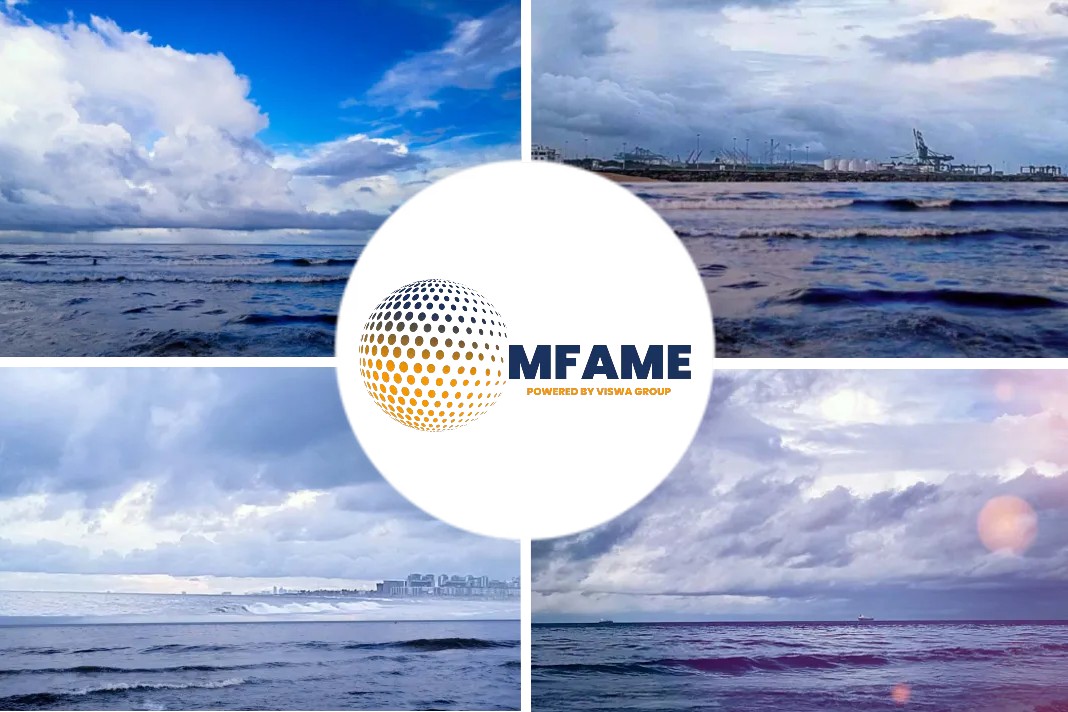South Korea implements emission reduction initiatives in major port areas, says an article published in Gard.
Special Act on Air Quality Improvement
South Korea’s Special Act on Air Quality Improvement in Port and Other Areas is effective from 1 January 2020 as a part of an ongoing national programme to reduce air pollution from shipping and port activities.
The act introduces a series of measures, some of which will have direct impact on ships’ operational practices, and advise ship operators and masters to make note of the following.
About the emission reduction initiatives
New Korean emission control areas
Effective from 1 September 2020, the following South Korean port areas become domestic emission control areas (ECAs):
- Incheon
- Pyeongtaek-Dangjin
- Yeosu-Gwangyang
- Busan
- Ulsan
The extent of ECA in ports
The maps below have been extracted from the Korean Ministry of Oceans and Fisheries’ announcement on 26 December 2019 (in Korean) and the red lines in the maps indicate the extent of the ECA in each port.
New sulphur emission limits
South Korea is introducing a gradual implementation of requirements covering emissions of air pollutants by ships:
From 1 September 2020
- Ships must use fuel with a sulphur content not exceeding 0.10% while anchored or at berth in the Korean ECAs.
- Ships must switch to compliant fuel within one hour of mooring/anchoring and burn compliant fuel until not more than one hour prior to departure.
From 1 January 2022
- Ships must use fuel with a sulphur content not exceeding 0.10% at all times while operating within the domestic ECAs.
- Any fuel change-over operation must be completed prior to the entry into or commenced after exit from an ECA.
Alternative compliance methods
Though there is no direct link between the South Korean port air quality act and MARPOL Annex VI, it is noted that South Korean authorities will also accept alternative compliance methods that are at least as effective in terms of sulphur emission reductions, e.g. use of scrubbers for exhaust gas cleaning and clean fuel (LNG).
Guidelines on implementation
Methods of verification
The methods of verification used by South Korean inspectors could be expected to be in line with those set out in MARPOL Annex VI and include:
- for ships using low sulphur fuel, check of bunker delivery notes, fuel change-over procedures, engine room logbook records and fuel oil quality/samples; and
- for ships using alternative measures, such as LNG or exhaust gas scrubbers, check of the International Air Pollution Prevention (IAPP) Certificate/Record and engine room log book records.
Avoid any delay or penalty
In order to avoid any delay or penalty being incurred by the ship, it should also be ensured that:
- bunkering strategies and fuel change-over procedures are revisited to ensure compliance with the new Korean requirements;
- dates and times of the ship’s arrival and departure in a Korean port, and of the commencement and completion of fuel change-over operations, are recorded as soon as practicable after each occurrence and that such records are kept onboard readily available for inspection;
- the quality of fuel purchased can be documented, e.g. by obtaining and retaining onboard bunker delivery notes (BDNs) and representative samples of the low sulphur fuel oil delivered; and
- the applicable port requirements and relevant control measures at any given time are verified with the local agent or port authorities well before arrival.
Incentives for speed reduction
A programme that encourages and incentivises slow steaming ships was implemented as early as December 2019.
The programme applies to the ports of Busan, Ulsan, Yeosu-Gwangyang and Incheon, and participating ships will receive discounts on port entry/leave fees for complying with the slow-steaming requirements.
The sea areas in which the speed reductions apply span 20 nautical miles in radius, measured from a specific lighthouse in each port. Ships eligible for participation vary at each port but must be above 3,000 GT and among the top three “fine-dust emitting” ship types in the specific port.
Additional advice
A number of regions, states and ports around the world have implemented their own strict sulphur emission limits – and the list of such places is likely to grow in the future.
- Ship operators must ensure crews are familiar with the sulphur emission limits in force in the jurisdiction to which they trade.
- Crews should also be provided with clear procedures and guidance to this effect.
“Regional sulphur emission limits at a glance” gives information on some of the places where special sulphur emission regulations apply.
Did you subscribe to our daily newsletter?
It’s Free! Click here to Subscribe!
Source: Gard
























